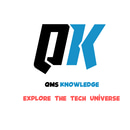IS 101: Specification for General Purpose Paints
This specification covers various aspects like composition, consistency, color, gloss, drying time, and performance in diverse environments, making it essential for manufacturers, inspectors, and engineers alike.
PAINTING
9/16/20242 min read


Introduction to IS 101
In The latest edition of IS 101 is a comprehensive update that reflects modern advances in materials, environmental considerations, and application techniques. It serves as an essential guide for manufacturers, contractors, and quality control professionals to ensure consistent and reliable performance of paints across various sectors.
Scope of IS 101 (Latest Edition)
The latest edition of IS 101 covers the specifications for a wide range of paints, including synthetic enamel, oil-based, water-based emulsions, primers, and more. It ensures that paints used for general purposes meet essential quality benchmarks for performance, durability, and environmental safety. The standard applies to paints used in construction, manufacturing, infrastructure, automotive, and other industrial settings.
Key Updates and Additions in the Latest Edition of IS 101
Environmental and Safety Compliance: The latest edition of IS 101 incorporates updated guidelines to meet modern environmental and safety standards, including low VOC (Volatile Organic Compound) levels. These changes align with global trends toward reducing environmental impact and ensuring safer working conditions for applicators and end-users.
Enhanced Testing Methods: IS 101 has refined its testing methodologies for properties like gloss, adhesion, drying time, and resistance to environmental factors such as UV radiation, moisture, and chemicals. Newer tests include advanced weathering simulations, providing better insights into long-term durability.
Inclusion of Water-Based Paints: Recognizing the growing shift toward eco-friendly water-based paints, the latest edition includes comprehensive guidelines for testing and quality control of water-based formulations, which offer lower emissions and faster drying times compared to traditional oil-based paints.
Detailed Surface Preparation Guidelines: Proper surface preparation is crucial for optimal paint performance. The new edition offers more detailed requirements for surface cleanliness, rust and grease removal, and priming, ensuring paints adhere better and last longer.
Corrosion Resistance and Durability: For paints used in industrial and coastal environments, the standard emphasizes corrosion resistance. New tests have been introduced for assessing the long-term effects of salt spray, humidity, and chemical exposure, particularly for metal substrates.
Consistency in Quality Control: The updated IS 101 emphasizes strict quality control measures throughout the production process, from raw materials to finished products. It ensures uniformity in batch production, guaranteeing that paints deliver consistent performance across various applications.
Key Areas Covered in IS 101
Color and Gloss Retention: The standard includes specifications for color consistency and gloss retention over time, ensuring that the aesthetic appeal of painted surfaces is maintained.
Film Thickness and Coverage: Guidelines ensure that the paint achieves the required thickness and coverage for both protective and decorative functions.
Drying Time and Curing: Detailed testing for drying and curing times is included, with specific parameters for air-drying, forced-drying, and baking methods.
Adhesion and Flexibility: The standard ensures that paints adhere properly to surfaces and retain flexibility without cracking or flaking under stress.
Weather Resistance: The standard tests for performance under various weather conditions, including rain, sunlight, and temperature changes, critical for outdoor applications.
Importance of IS 101 in Industrial and Commercial Applications
The latest edition of IS 101 not only upholds the core principles of quality and reliability but also adapts to modern technological advances. For engineers, quality control personnel, and manufacturers, adhering to IS 101 ensures compliance with industry standards, reduces the risk of premature paint failure, and enhances the durability of coated surfaces. Whether in construction, marine, automotive, or industrial maintenance, using paints that comply with IS 101 helps in extending the life of assets, reducing maintenance costs, and promoting sustainability.
Conclusion
The latest edition of IS 101: Specification for General Purpose Paints serves as a comprehensive guideline for ensuring that general-purpose paints meet the desired quality, performance, and safety standards. By following these specifications, stakeholders across industries can ensure their projects meet regulatory requirements and deliver long-lasting results.
